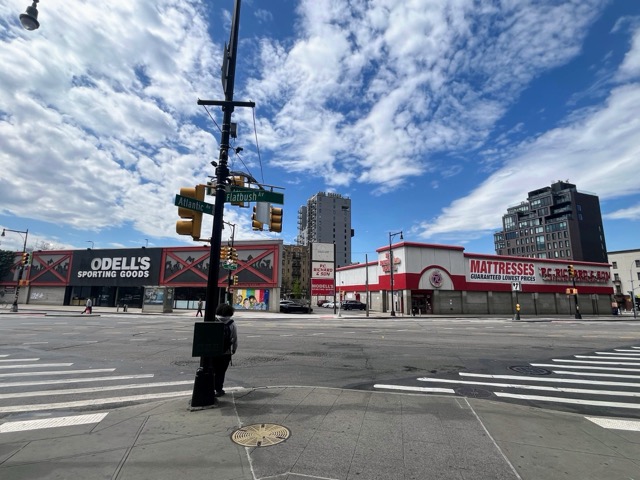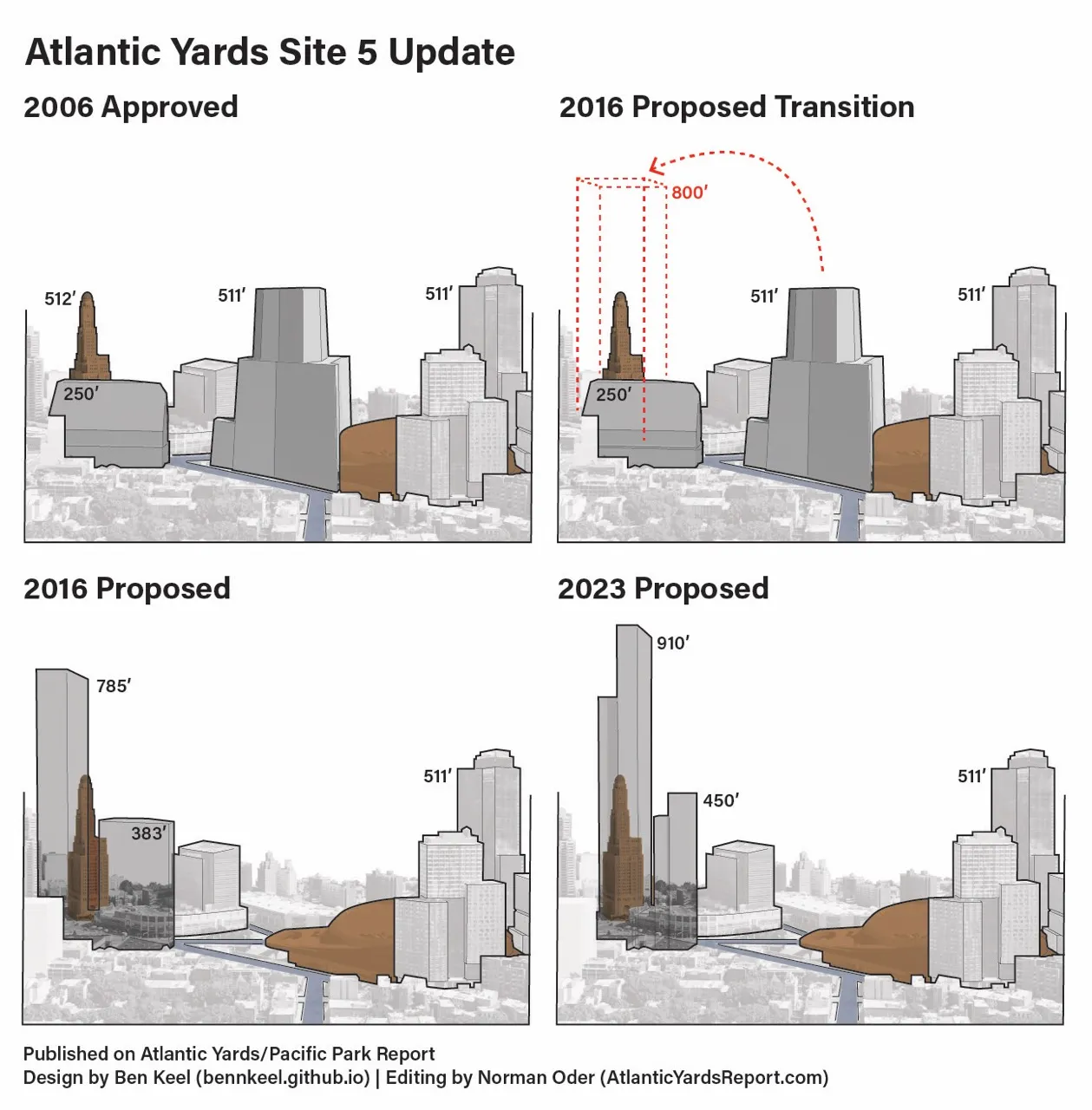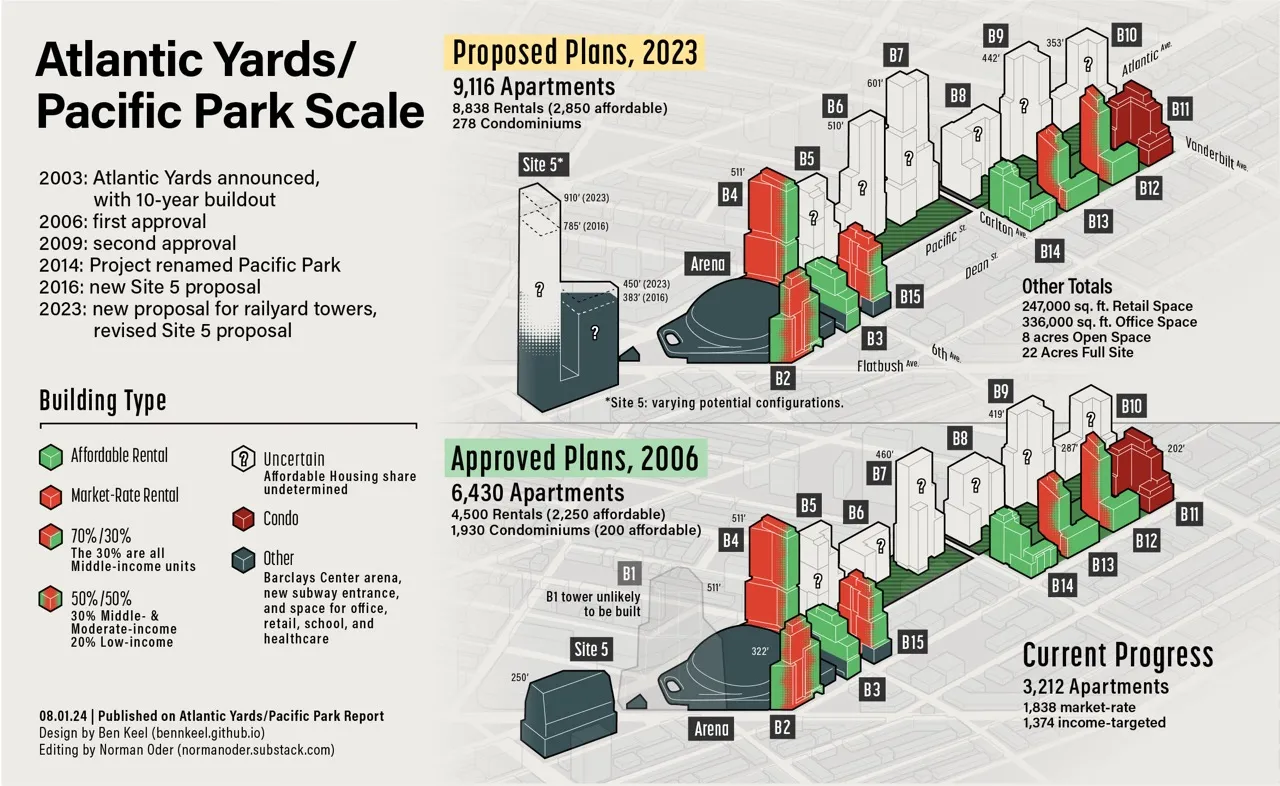So, are changes at Site 5, with supersized density, a "done deal"? What community engagement is coming? Well, it also would involve railyard sites.
This is the third of three articles about the Aug. 8 Atlantic Yards Community Development Corporation (AY CDC) meeting. The first concerned the mystery topic discussed in Executive Session. The second concerned leasing of the arena plaza.
The Executive Session concerned the future of the six parcels at the Vanderbilt Yard, likely to be lost by master developer Greenland USA via foreclosure to another developer, perhaps Related Companies.
In the public session of the meeting, AY CDC Director Gib Veconi brought up plans for the project's other remaining parcel: Site 5, the parcel catercorner to the arena, currently occupied by the big-box stores P.C. Richard and the now-closed Modell's.
It's bounded by Atlantic, Flatbush, and Fourth avenues, and Pacific Street. The latter is mostly row houses on the south side, marking a transition into Park Slope, while Fourth Avenue was rezoned for towers mostly 12-16 stories.
 |
| Looking south at Site 5 |
 |
| Unofficial rendering |

Such things all require environmental review under state rules, "but these were all agreed without environmental review," he observed, suggesting that, despite that expected future public process, the developers "would probably" consider the promises binding.
He asked ESD if Exhibit K was binding. Could the lease be amended for less density or other commitments?
"That document," responded ESD's Joel Kolkmann, Senior Vice President, Real Estate, "says that ESD would endeavor to move forward with a public approval process for that."
"Exactly, yeah," responded Kolkmann.
Veconi pointed out the specificity of the goals cited.
"It could be through a public approval process that those things change," Kolkmann observed.
Kolkmann said yes, noting that changes would emerge from a community engagement process. (Of course, the developer had already proposed more, albeit delayed, affordable housing.
Shiffman also brought up the 2018 suggestion, as I've referenced, by then-Director Jaime Stein that an independent consultant help the AY CDC board evaluate the impact of the process.
"I'm not sure we have anything in the budget for that," Kummer observed. "I agree that it could be very useful."
What was not explained was how, previously, when ESD had two employees assigned to Atlantic Yards/Pacific Park, other staff were able to work on the project while being paid their regular salaries.
In other words, why doesn't AY CDC have any money?
Kummer suggested that some in the academic community might help. Shiffman cited the the Brooklyn office of the Department of City Planning and the Borough President's Office.
ESD's Arden Sokolow. Executive VP, Real Estate Development and Planning, wondered what people would be asking about: "Is it about how much density should be at this site? Like, what's the question?"
Shiffman said that experts should study "the carrying capacity of that site," such as schools, air quality, and the ability to build community.
Kummer, more conciliatorily, suggested that the community engagement would go beyond the mandated state process.
"You need to have a thing to get people to sort of talk about the impacts of that thing," Sokolow said.
Divergent developers?
Veconi noted that last year they'd been discussing community engagement, but that got delayed.
"I imagine that it would be preferable for us to do an engagement process around the whole site holistically: platform sites and Site 5," Sokolow responded, which means "we need this other piece"--negotiations with Related?-- to play out first."
"I theoretically agree with you 100%," Veconi said, but if there are two different developers, there might be different paths.
That, Sokolow said, they could discuss at the next meeting.
Divergent jurisdictions
That also means different elected officials, they observed.


Comments
Post a Comment